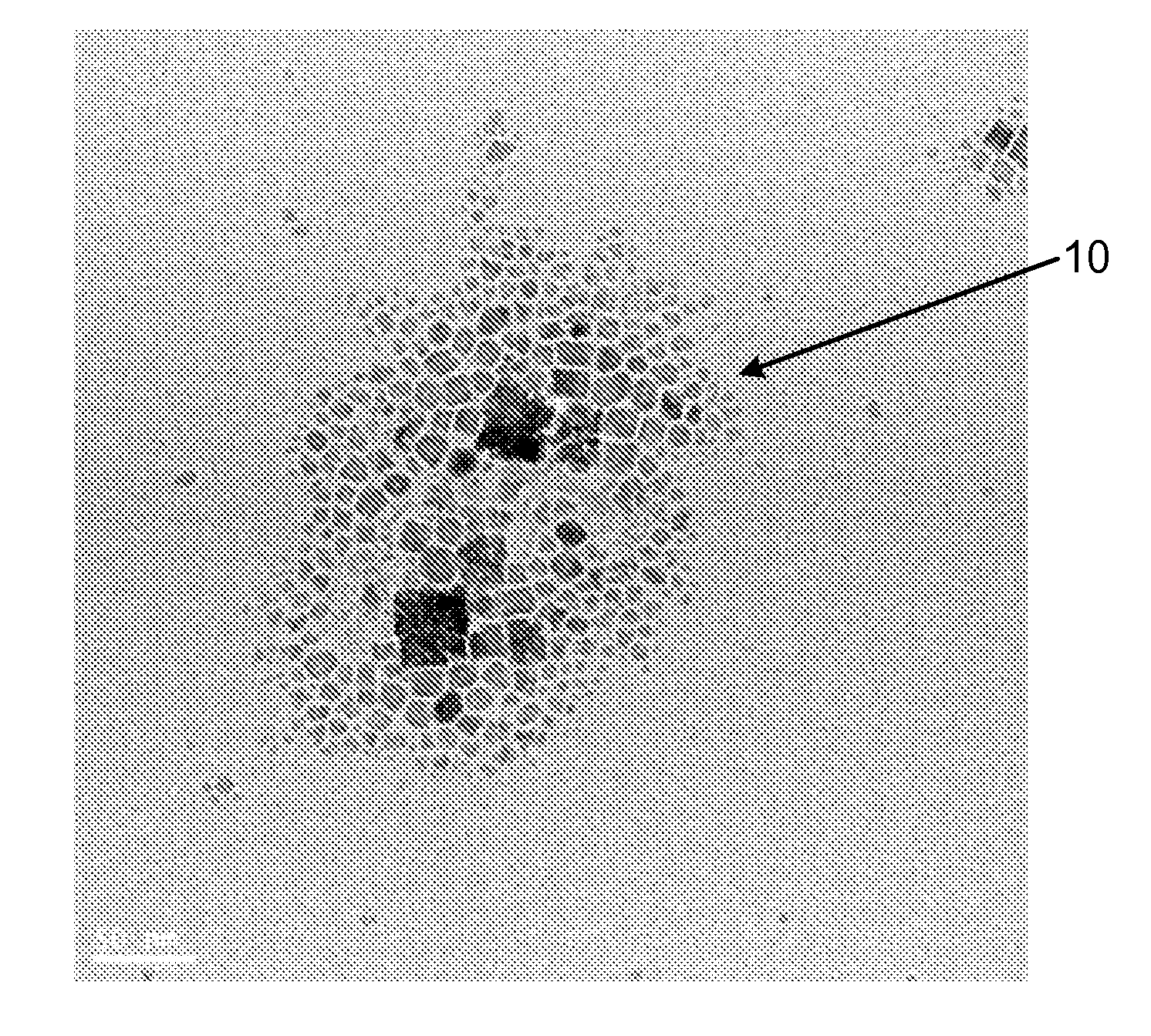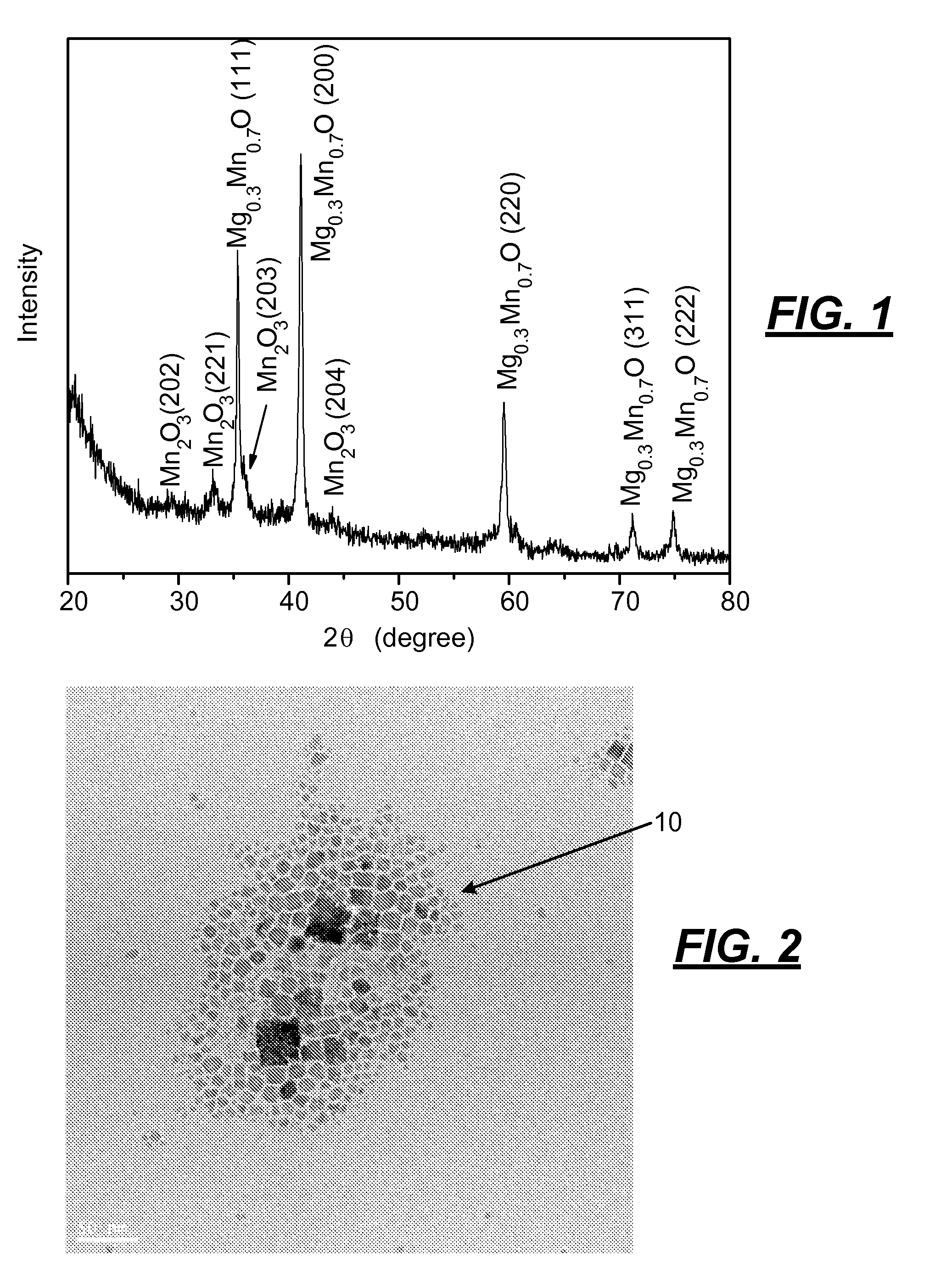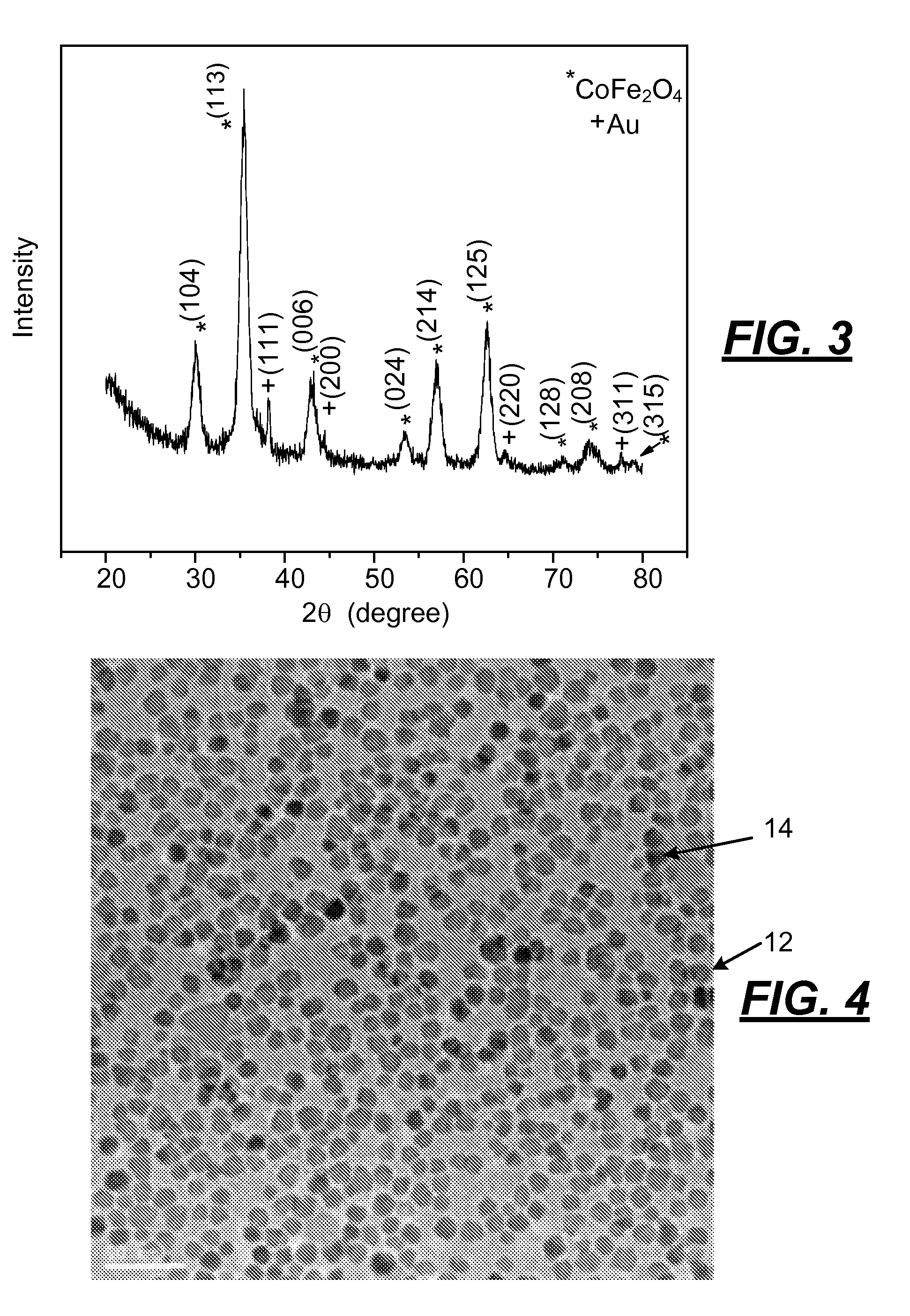Nanoparticle additives and lubricant formulations containing the nanoparticle additives
- Summary
- Abstract
- Description
- Claims
- Application Information
AI Technical Summary
Benefits of technology
Problems solved by technology
Method used
Image
Examples
example 1
Production of CeO2 Nanoparticles
[0110]The following procedure was used to produce cerium oxide nanoparticles having a particle size of less than 5 nanometers. Cerium acetate (1 gram, 0.00315 mols) was mixed with 7.5 mL of oleylamine (0.2279 mols) and 4.33 mL of oleic acid (0.13 mols) in a suitable vessel. The mixture was heated to 110° C. and held at that temperature for 10 minutes to provide a clear solution of cerium acetate without crystalline water in the solution. Next, the cerium acetate solution was irradiated with microwave irradiation for 10 to 15 minutes to produce a stable dispersion of cerium oxide in the amine and acid. The stabilized dispersion was washed 2-3 times with ethanol to remove any free amine or acid remaining in the dispersion. Finally, the stabilized cerium oxide product was dried overnight under a vacuum to provide the particles have a size of less than 5 nanometers. X-ray diffraction confirmed that nanoparticles of crystalline cerium oxide were produced. ...
example 2
Production of Mg0.3Mn0.7O Nanoalloy Particles (Cubes+Spheres)
[0111]The following procedure was used to produce an alloy of magnesium and manganese oxide nanoparticles. Oleylamine (4.25 mL, 0.129 mols) and 1.36 mL of oleic acid (0.04 mols) was mixed in a suitable vessel that was stirred and heated in a hot oil bath to 120° C. and held at that temperature for 10 minutes. A mixture of magnesium acetate (0.14 grams) and manganese acetyl acetonate (0.34 grams) powder was added under vigorous stirring to the amine and acid to provide a clear solution. The solution was then microwaved for 15 minutes. After microwaving the solution, synthesized nanoparticles of magnesium / manganese oxide were flocculated with ethanol, centrifuged, and redispersed in toluene.
[0112]The Mg0.3Mn0.7O nanoparticles made by the foregoing process had an x-ray diffraction pattern as shown in FIG. 1 that indicated that traces of manganese oxide were included in the Mg0.3Mn0.7O alloy. The photomicrograph of the nanopar...
example 3
Production of CoFe2O4 Nanoalloy Particles (Spheres)
[0113]The following procedure was used to produce an alloy of cobalt and iron oxide nanoparticles having a particle size of less than 5 nanometers. Oleylamine (3.75 mL, 0.114 mols) and 3.6 mL of oleic acid (0.11 mols) was mixed in a suitable vessel that was stirred and heated in a hot oil bath to 120° C. and held at that temperature for 15 minutes. A mixture of iron acetyl acetonate (0.45 grams) and cobalt acetyl acetonate (0.16 grams) powder was added under vigorous stirring to the amine and acid to provide a clear solution. The solution was then microwaved for 10 minutes. After the solution was cooled, 300 μL hydrogen tetrachloroaurate (30 wt. % solution in hydrochloric acid) were injected into the alloyed particle solution under vigorous stirring for 10 minutes. The synthesized nanoparticles of cobalt / iron oxide were flocculated with ethanol, centrifuged, and redispersed in toluene.
[0114]The CoFe2O4 nanoparticles made by the fore...
PUM
 Login to View More
Login to View More Abstract
Description
Claims
Application Information
 Login to View More
Login to View More - R&D
- Intellectual Property
- Life Sciences
- Materials
- Tech Scout
- Unparalleled Data Quality
- Higher Quality Content
- 60% Fewer Hallucinations
Browse by: Latest US Patents, China's latest patents, Technical Efficacy Thesaurus, Application Domain, Technology Topic, Popular Technical Reports.
© 2025 PatSnap. All rights reserved.Legal|Privacy policy|Modern Slavery Act Transparency Statement|Sitemap|About US| Contact US: help@patsnap.com



